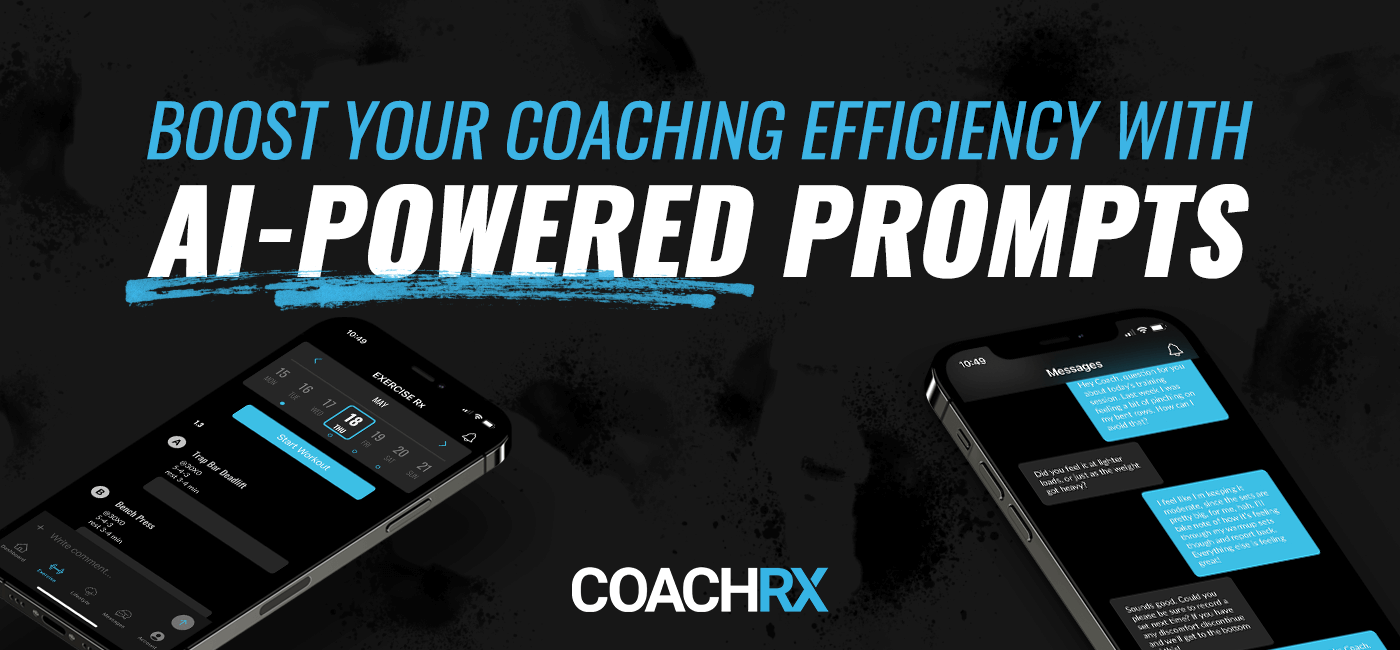
In the ever-evolving world of fitness coaching, embracing the power of Artificial Intelligence (AI) can be a game-changer. It presents a world of possibilities, but the challenge lies in finding AI tools that align with your core principles and the trusted science of your coaching practice.
We understand this, and that’s why we’re excited to introduce a unique solution—a combination of AI prompts and an educational course designed to not only streamline your coaching but also enhance the overall experience for both coaches and clients.
Why We Created These Free AI Resources
Our journey into AI for fitness coaching began with a simple question: how can we harness the power of AI while staying true to our core principles and practices at OPEX? The answer was clear – create resources that bridge the gap between AI and coaching.
Practical Tools That Elevate Coaching
The AI prompts and the accompanying “AI for Fitness Coaches” course containing in our Make AI Your Coaching Assistant resource were born from this quest for practical and efficient tools. But what makes these tools truly special is their real-world applicability. These aren’t just theoretical concepts; they are the same tools used by fitness coaches to streamline workflows, analyze data, and provide valuable insights for program design.
Here are a few sample prompts you’ll find inside the resource:
Why We Know They Work
The impact of AI, when applied correctly, is nothing short of incredible. These resources have not only transformed our coaching methods but have also influenced how we teach coaches to approach program design. AI can significantly enhance your coaching practice by helping you make more informed decisions, personalize programs, and analyze data effectively.
Access the free prompt database and AI course here.
Unlocking the Value of AI in Fitness Coaching
We believe in the power of these resources so much that we want to share them with you for free. With the guidance of the AI prompts and the insights gained from the free course, you’ll be better equipped to leverage AI in your coaching practice. Here’s how AI can bring value to your coaching:
1: Personalization
AI can help you create tailored fitness programs for individual clients, taking into account their unique needs, capabilities, and goals.
2: Data Analysis
With AI, you can analyze vast amounts of data quickly and efficiently, helping you make informed decisions and track your clients’ progress more effectively.
3: Efficiency
AI can streamline your workflows, saving you time and allowing you to focus on what truly matters—coaching your clients.
4: Insights
By utilizing AI prompts and tools, you’ll gain valuable insights that can enhance your coaching and program design.
Ready to explore the possibilities of AI in fitness coaching and revolutionize your coaching career? Click here to access the prompts and the free course.
Let’s embark on this AI journey together and reshape the way we approach coaching, making it more effective, personalized, and efficient. We look forward to witnessing the remarkable impact this knowledge will have on your coaching career.


